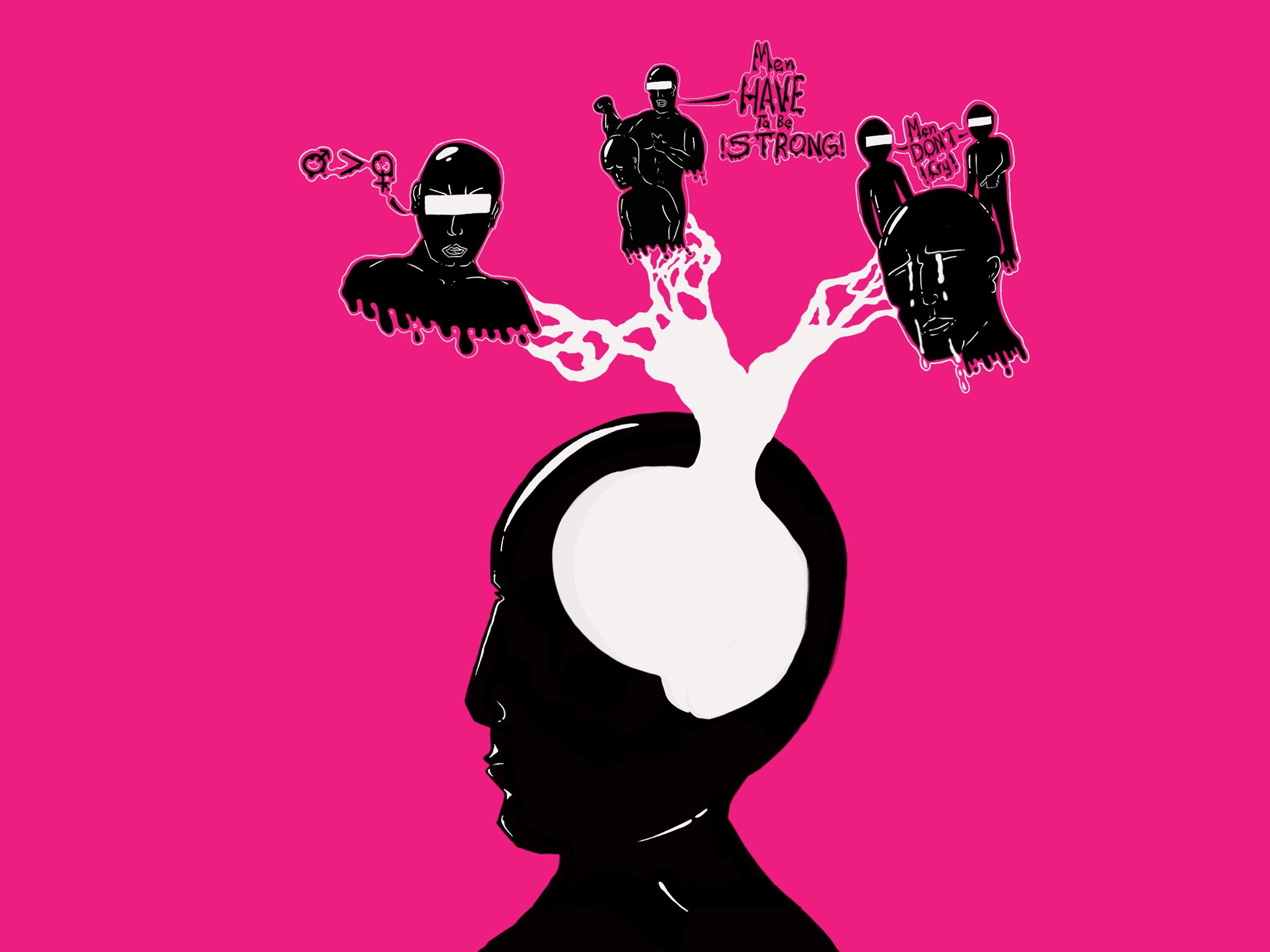
Toxic masculinity is a learned behavior, passed down from generation to generation as well as taught within social groups.
The culture today is that this toxic behavior of ‘machismo’ going overboard is acceptable, but it only became acceptable through social conditioning and sexist overtones in modern day culture.
There are many variables that cultivate the development of toxic masculine principles in men.
One that is very prevalent is the common practice of parents, particularly fathers, teaching their children these toxic thought processes.
Many boys are told at a young age that ‘boys don’t cry,’ and if they are vulnerable, they are being weak or are ‘acting like a girl’. This instills the notion that being emotionally open is bad, weak and shouldn’t be done.
Girls, on the other hand, are told that they can’t play with ‘boys toys’ like action figures or toy tools. The term ‘tomboy’ at a young age is given a negative connotation.
Girls are additionally told that they need to learn to cook and clean at a young age or they’d be seen as undesirable as they get older. This provides more pressure for different genders to be separate in actions and taste.
With a child being taught this certain belief that these gender roles and norms are the only appropriate way to be, they then enforce it on their peers. This causes children whose parents didn’t force this toxicity on them to be exposed and taught gender roles and what is and isn’t appropriate for a male/female to do.
The Media’s Role in Teaching Toxic Masculinity
The media has been a long standing problem when it comes to perpetuating toxic masculinity to the masses as well as the continuing of its acceptability in the public sphere.
One way the media maintains the sentiment of toxic masculinity is the constant story arch of the typical ‘super strong hyper-masculine hero saving his damsel in distress’.
This continual and unchanging plot creates a precedent that women being the ‘damsels in distress’ and men being the ‘strong hero who can do anything’ is what’s acceptable. This sustains these toxic and confining gender roles.
Another example is the portrayal of non-traditional feminine men and masculine women as jokes or as strange characters.
A typical storyline is men being laughed at and portrayed as less than because their wives are making more than them, fixing things or doing anything even remotely masculine. This creates an attitude of invalidation towards actual individuals who don’t meet their gender’s traditional demand for masculinity and femininity.
This invalidation and label as bizarre for non-traditional people feeds into the public notion that these people are not normal or should not be trusted, which adds fuel to the fire of toxic masculinity in the public.
Since the media is the gatekeeper of what goes into the public sphere, their actions have a higher impact than any normal individual because they tell the people what is and isn’t acceptable.
The preservation of these toxic beliefs validate the millions who still view the world in such a black and white way.
With the many views on gender roles and their enforcement, most people can agree that the application of them into our lives is a belief that is taught. People are not born racist, homophobic or hyper-masculine. These traits are instilled in them at a young age and are validated as they mature.
The validation and continuing of these opinions is largely done through popular culture which is mainly influenced by the media’s enforcement of hyper masculine views.
Until these views are no longer taught and perpetuated, this toxic perspective in different personality types will continue.


